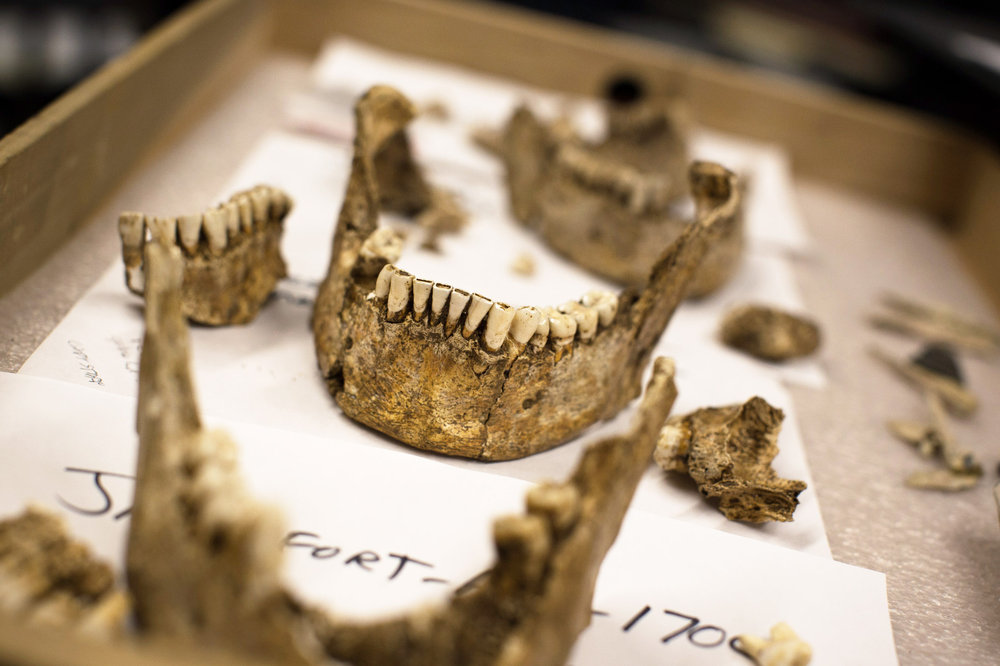-
Tips for becoming a good boxer - November 6, 2020
-
7 expert tips for making your hens night a memorable one - November 6, 2020
-
5 reasons to host your Christmas party on a cruise boat - November 6, 2020
-
What to do when you’re charged with a crime - November 6, 2020
-
Should you get one or multiple dogs? Here’s all you need to know - November 3, 2020
-
A Guide: How to Build Your Very Own Magic Mirror - February 14, 2019
-
Our Top Inspirational Baseball Stars - November 24, 2018
-
Five Tech Tools That Will Help You Turn Your Blog into a Business - November 24, 2018
-
How to Indulge on Vacation without Expanding Your Waist - November 9, 2018
-
5 Strategies for Businesses to Appeal to Today’s Increasingly Mobile-Crazed Customers - November 9, 2018
America’s ‘lost leaders’ unearthed
A well-preserved box believed to be a Catholic reliquary, displayed Tuesday at the Smithsonian’s National Museum of Natural H…
Advertisement
They also unearthed a fragment of a captain’s leading staff and a mass of silver-spangled fabric – both signs of military rank.
President of Jamestown Rediscovery James Horn says it’s pretty significant. West, who was also known as Lord De La Warr (for which Delaware was named), resupplied and then led the colony.
Archeologists with Jamestown Rediscovery have been working to identify the remains since they were found in November of 2013.
Douglas W. Owsley, division head of physical anthropology at the Smithsonian, who helped lead the efforts to identify the men, said his team studied everything from pollen found with the skeletons to the lead content on their bones. Only one other person buried at Jamestown has been confidently identified by name.
Archaeologists have been studying the site since 1994 when the original James Fort – long thought to be lost and submerged in the James River – was rediscovered. The church site was mostly untouched and had not been excavated for more than a century before it was found in 2010.
They include Rev. Robert Hunt, who is believed to be the first Anglican minister in the Americas; Sir Fernando Wainman, an English knight and cousin of the first governor of Virginia; and Capt. William West, a young uncle of the governor.
The men all died during the settlement’s tenuous early years when colonists struggled to grow enough food to survive and frequently clashed with the Powhatan Confederacy, a Native American tribe that dominated the region.
Scientists used archaeology, skeletal analyses, chemical testing, 3-D technology, and genealogical research to single out the four men from dozens of English colonists who died at Jamestown from 1608 through 1617, when the church fell into disrepair. Theres nothing like it anywhere else in this country.While the individuals buried at Jamestown were not royalty, they were considered pivotal figures in the early colony.
The scientists compared the find in terms of significance to the 2012 discovery of the lost grave of King Richard III in England.
Still, the remains were scant – only about 30 percent of each skeleton remained – and very little wood of the three coffins (one body was buried in a shroud) was intact as well. “Remember this is the Protestant Church of England”. And by referencing a list of early colony leaders who died between 1608 and 1617, the researchers produced a short-list of potential candidates. He died at the age of 34 during a six-month period known as the “starving time” when many perished due to disease, starvation and battles with Indians. Archaeologists found a small silver box containing seven bone fragments and flask used to contain holy water – Catholic artifacts. Researchers are wondering whether Archer, whose parents had been persecuted back in England because of their Catholic faith, may have in fact been a secret Catholic himself, or that there might have been a Catholic cell among the Protestants in Jamestown.
“It was a real kind of aha moment for a lot of us”, said William Kelso, Jamestown’s director of archaeology. It was oh, religion was a big deal here, and thats often overlooked. “Most people would come and go and die at Jamestown, and nobody would write a word about them”.
Advertisement
Captain William West’s body was draped with the very fragile silver and silk fabric that scientists later identified as a military sash.





























